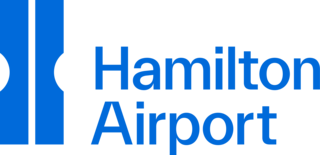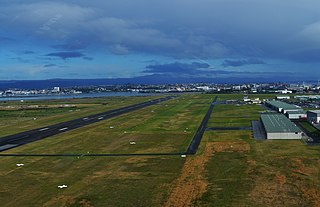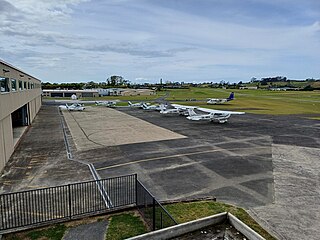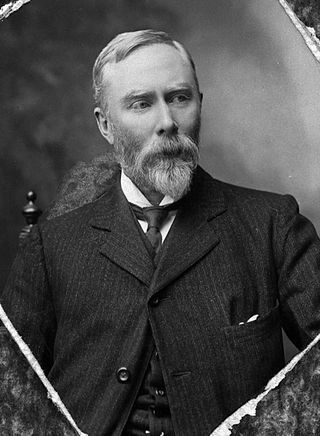Related Research Articles

The Royal Aero Club (RAeC) is the national co-ordinating body for air sport in the United Kingdom. It was founded in 1901 as the Aero Club of Great Britain, being granted the title of the "Royal Aero Club" in 1910.

The de Havilland DH.82 Tiger Moth is a 1930s British biplane designed by Geoffrey de Havilland and built by the de Havilland Aircraft Company. It was operated by the Royal Air Force (RAF) and other operators as a primary trainer aircraft. In addition to the type's principal use for ab initio training, the Second World War had RAF Tiger Moths operating in other capacities, including maritime surveillance and defensive anti-invasion preparations; some aircraft were even outfitted to function as armed light bombers.

The Aero L-29 Delfín is a military jet trainer developed and manufactured by Czechoslovakian aviation manufacturer Aero Vodochody. It is the country's first locally designed and constructed jet aircraft, as well as likely being the biggest aircraft industrial programme to take place in any of the Council for Mutual Economic Assistance (COMECON) countries except the Soviet Union.

The Pacific Aerospace Corporation CT/4 Airtrainer series is an all-metal-construction, single-engine, two-place with side-by-side seating, fully aerobatic, piston-engined, basic training aircraft manufactured in Hamilton, New Zealand.

NZSkydive Ltd, trading as NZAero, is an aircraft manufacturing company based in Hamilton, New Zealand. Along with its predecessors, it has sold more than 700 utility, training and agricultural aircraft. The company replaced Pacific Aerospace Ltd, which became insolvent and was liquidated in 2021.

Hamilton Airport is an airport located 14 kilometres south of the city of Hamilton in the Waikato region, in New Zealand. It is sited at Rukuhia, which was the name of the Royal New Zealand Air Force base on that site during World War II.

Eagle Airways was a regional airline based in Hamilton, New Zealand and was wholly owned by Air New Zealand, operating regional services under the Air New Zealand Link brand. The airline was disbanded on 26 August 2016, with staff absorbed into Air New Zealand's other subsidiaries.

Aerial topdressing is the aerial application of fertilisers over farmland using agricultural aircraft. It was developed in New Zealand in the 1940s and rapidly adopted elsewhere in the 1950s.

The Airco DH.4 is a British two-seat biplane day bomber of the First World War. It was designed by Geoffrey de Havilland for Airco, and was the first British two-seat light day-bomber capable of defending itself.

Tauranga Airport is an airport serving the city of Tauranga, New Zealand. It is located adjacent to Tauranga Harbour in the suburb of Mount Maunganui, approximately 3 km northeast of Tauranga CBD. The terminal is located to the north of the runway, on Jean Batten Drive, and consists of a two-storey building with four tarmac gates. Air New Zealand serves the airport, with flights to Auckland, Wellington and Christchurch. A further two regional airlines also operate to the airport, as well as scenic and charter flights, skydiving operations and general aviation.

The Slingsby T67 Firefly, originally produced as the Fournier RF-6, is a two-seat aerobatic training aircraft, built by Slingsby Aviation in Kirkbymoorside, Yorkshire, England.

Alpha Aviation is an aircraft manufacturing company based in Hamilton, New Zealand. It manufactures the Alpha 2000 range of light aircraft. The company was formed by a group of entrepreneurs who have purchased the rights to Apex Aircraft's Alpha R2000 aircraft, originally manufactured by Avions Robin. The aircraft is now being marketed as the 120T and 160A variants by Alpha

North Shore Aerodrome, also called North Shore Airport and Dairy Flat Airfield, is a small, uncontrolled aerodrome located 2 nmi (3.7 km) south southwest of Silverdale, near Auckland in New Zealand's North Island.

Blériot Aéronautique was a French aircraft manufacturer founded by Louis Blériot. It also made a few motorcycles between 1921 and 1922 and cyclecars during the 1920s.

The Simmonds Spartan is a 1920s British two-seat biplane trainer/tourer aircraft built by Simmonds Aircraft Limited.

The Auster J/1 Autocrat was a 1940s British single-engined three-seat high-wing touring monoplane built by Auster Aircraft Limited at Rearsby, Leicestershire.

Sir Henry Francis Wigram was a New Zealand businessman, politician and aviation promoter. He is best known for his role in developing a public transport system in Christchurch and as a key player in the establishment of the Royal New Zealand Air Force.
Hastings Aerodrome is a small airport located in Hastings, Hawke's Bay, New Zealand. It is sometimes referred to as Bridge Pa Aerodrome. It is owned and operated by the Hawke's Bay & East Coast Aero Club Inc.

The history of aviation in New Zealand began in the late 19th century when balloon flights began. In the first decade of the 20th century, several New Zealanders began developing heavier-than-air craft. The first confirmed powered flight in New Zealand being made by Richard Pearse in 1902 though is considered uncontrolled.

June Constance Howden, also known as Judy Howden was a New Zealand aviator and one of five New Zealand women who joined the Air Transport Auxiliary (ATA) during World War Two.
References
- ↑ "'ATA-girl': The Fab Five of New Zealand Aviation". Auckland War Memorial Museum. Retrieved 2024-05-31.